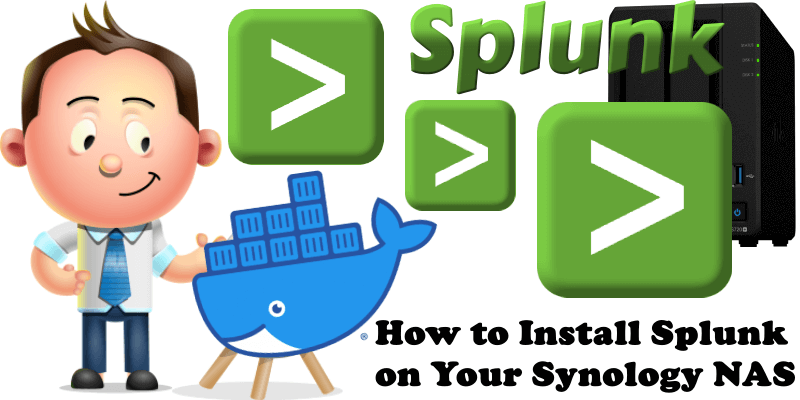
Splunk is a software platform to search, analyze and visualize the machine-generated data gathered from the websites, applications, sensors, devices etc. which make up your IT infrastructure and business. If you have a machine which is generating data continuously and you want to analyze the machine state in real time, then how will you do it? Can you do it with the help of Splunk? Yes! You can. You see servers and devices, apps and logs, traffic and clouds. Splunk sees data. Everywhere. Splunk provides the leading platform for Operational Intelligence. It allows the curious to see closely what others ignore, machine data, and find what others never see: information that can make your company more productive, profitable, competitive and safe. What can you do with Splunk? You only need to ask. In this step by step guide I will teach you how to install Splunk on your Synology NAS device using Docker.
STEP 1
Please Support My work by Making a Donation.
STEP 2
Install Container Manager via Synology “Package Center”. If you run an older DSM version (under 7.2), search for Docker instead of Container Manager.

STEP 3
Go to Control Panel / Task Scheduler / Create / Scheduled Task / User-defined script. Follow the instructions in the images below.
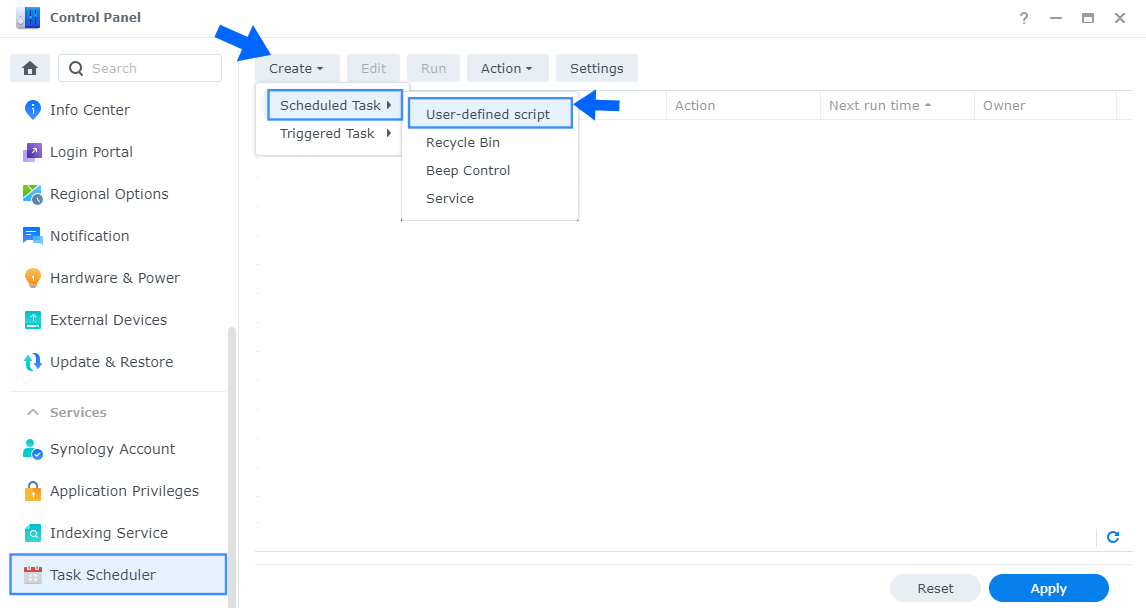
STEP 4
Once you click on User-defined script a new window will open. Follow the instructions below:
- General: In the Task field type in Install Splunk. Uncheck the “Enabled” option. Select root User.
- Schedule: Select Run on the following date then select “Do not repeat“.
- Task Settings: Check “Send run details by email“, add your email then copy paste the code below in the Run command area. After that click OK.
docker run -d --name=splunk \
-p 8321:8000 \
-e SPLUNK_START_ARGS=--accept-license \
-e SPLUNK_PASSWORD=yourpassword \
--restart always \
splunk/splunkNote: Before you paste the code above in the Run command area, change the value for SPLUNK_PASSWORD and add your own password.
Note: Make sure you set up your password correctly from the start (at least 8 characters). If your password does not meet complexity requirements, the splunk container will go into an eternal loop and will not be deployed correctly.
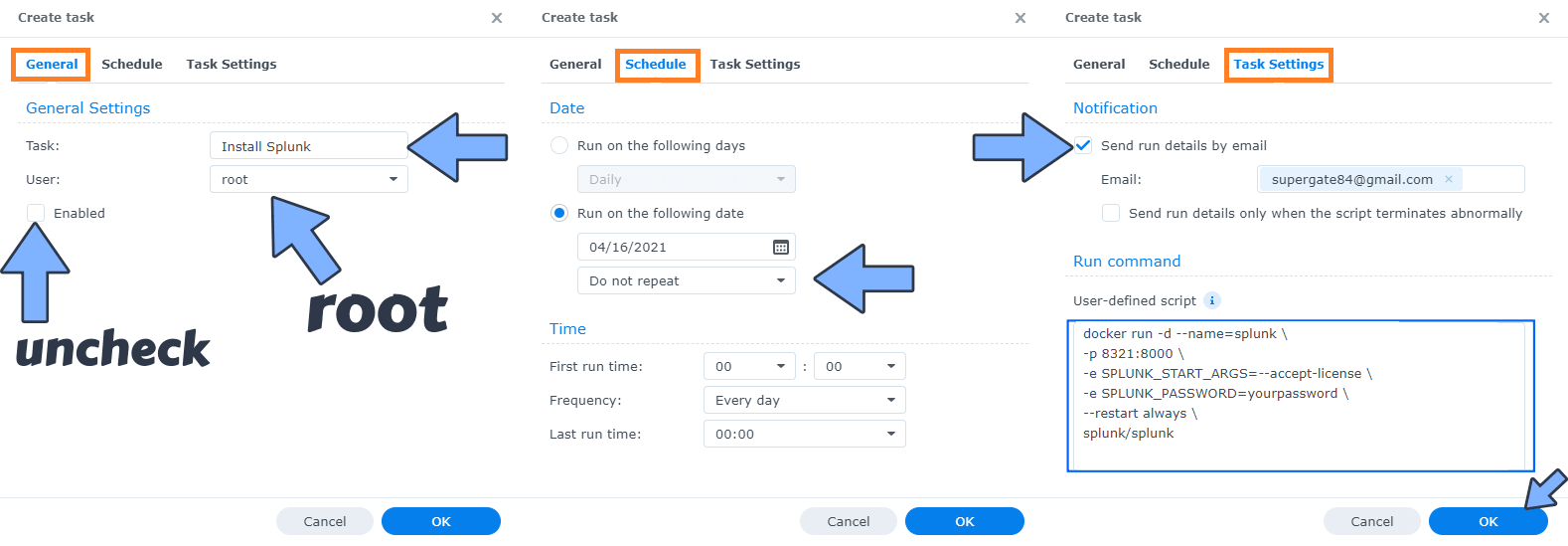
STEP 5
After you click OK on STEP 4 a new warning pop up window will open. Click OK.
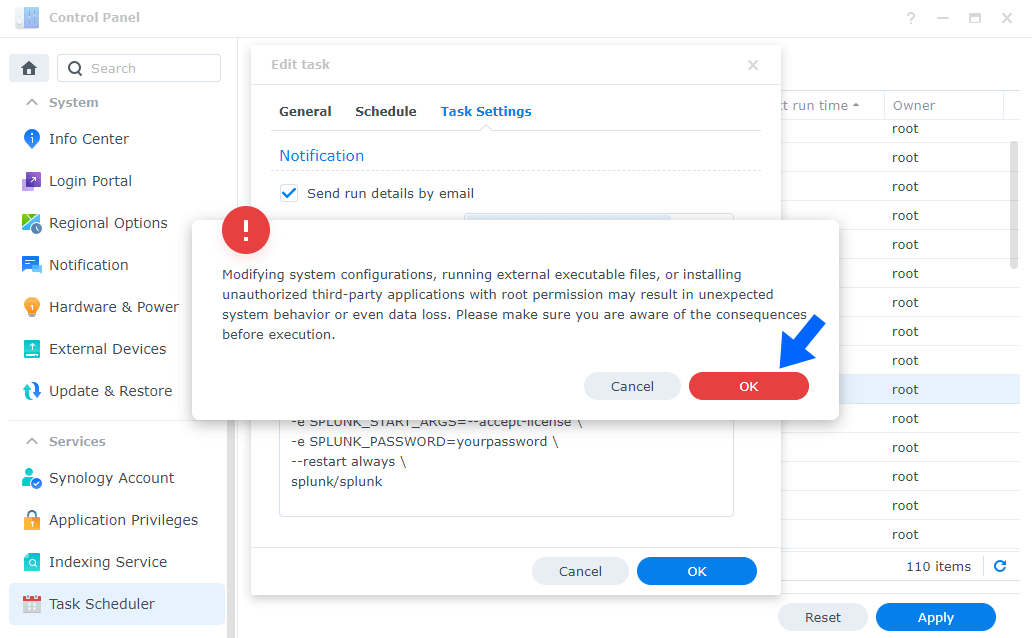
After you click OK, type in your DSM Password then click Submit. Follow the instructions in the image below.
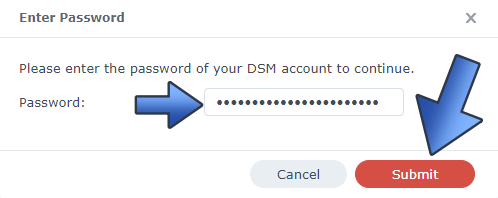
STEP 6
After you click Submit on STEP 5, select your “Install Splunk” Task then click the “Run” tab. You will be asked to run Install Splunk – click OK. Follow the instructions in the image below.
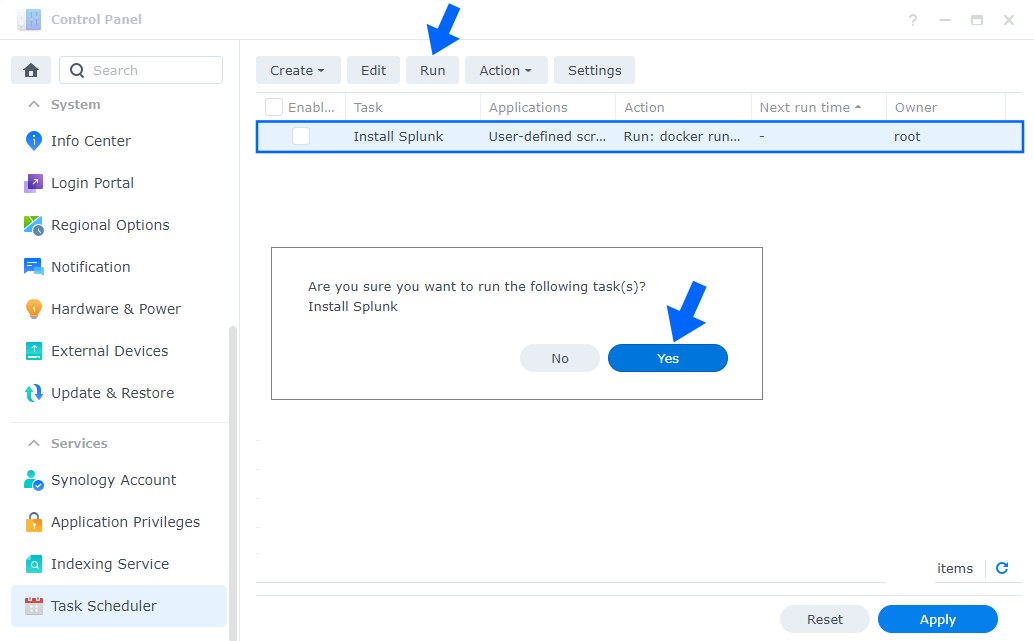
STEP 7
🟢Please Support My work by Making a Donation. Almost 99,9% of the people that install something using my guides forget to support my work, or just ignore STEP 1. I’ve been very honest about this aspect of my work since the beginning: I don’t run any ADS, I don’t require subscriptions, paid or otherwise, I don’t collect IPs, emails, and I don’t have any referral links from Amazon or other merchants. I also don’t have any POP-UPs or COOKIES. I have repeatedly been told over the years how much I have contributed to the community. It’s something I love doing and have been honest about my passion since the beginning. But I also Need The Community to Support me Back to be able to continue doing this work.
STEP 8
The installation process can take up to a few seconds/minutes. It will depend on your Internet speed connection. The current container is about 2GB so, depending on your connection, it could take some time. Just wait until the installation is complete before proceeding to the next step. Now open your browser and type in http://Synology-ip-address:8321 Follow the instructions in the images below. The default username is admin and the password is the one you have chosen at STEP 4. Click Sign In.
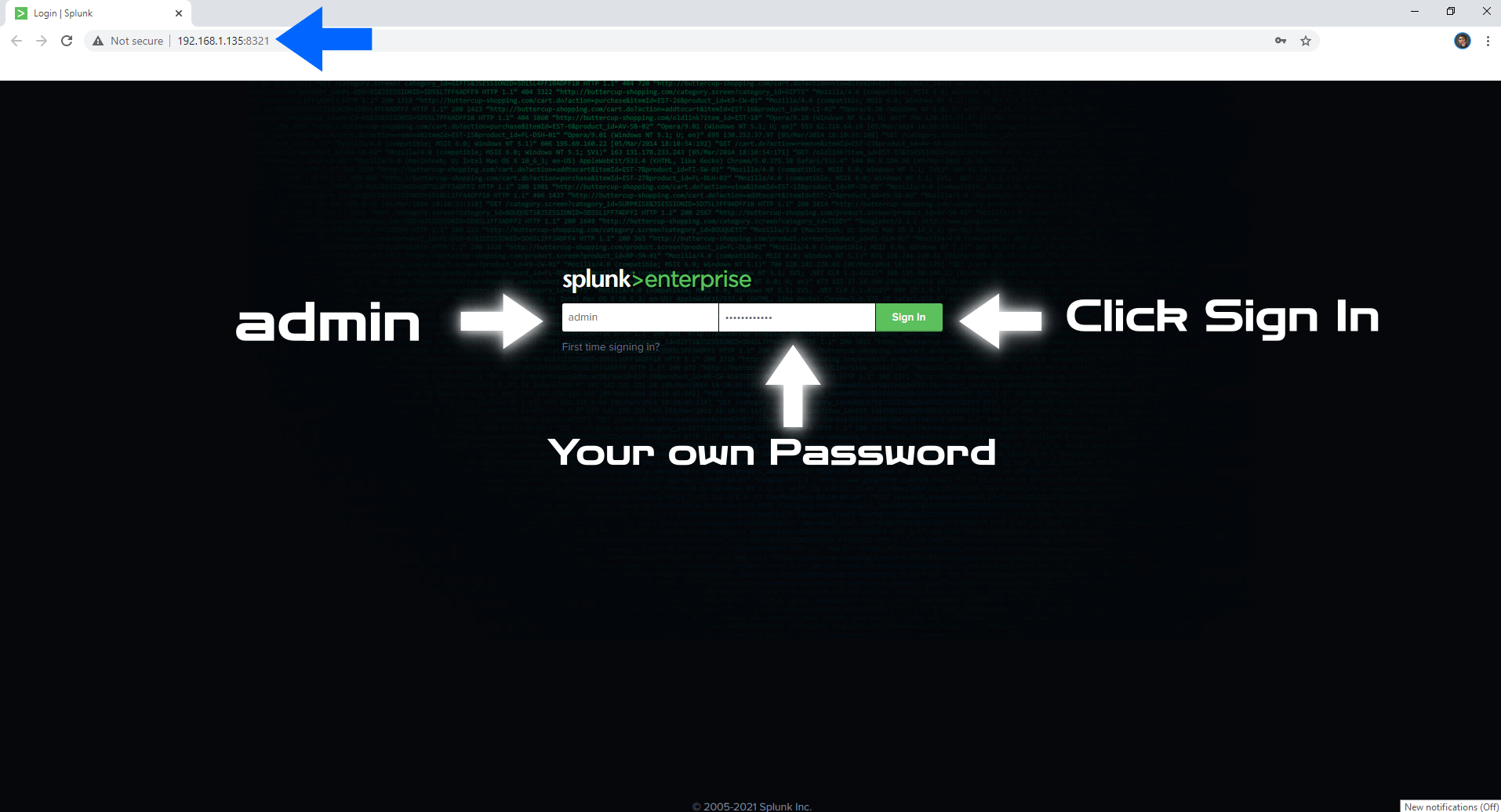
STEP 9
Click Got it! Follow the instructions in the image below.
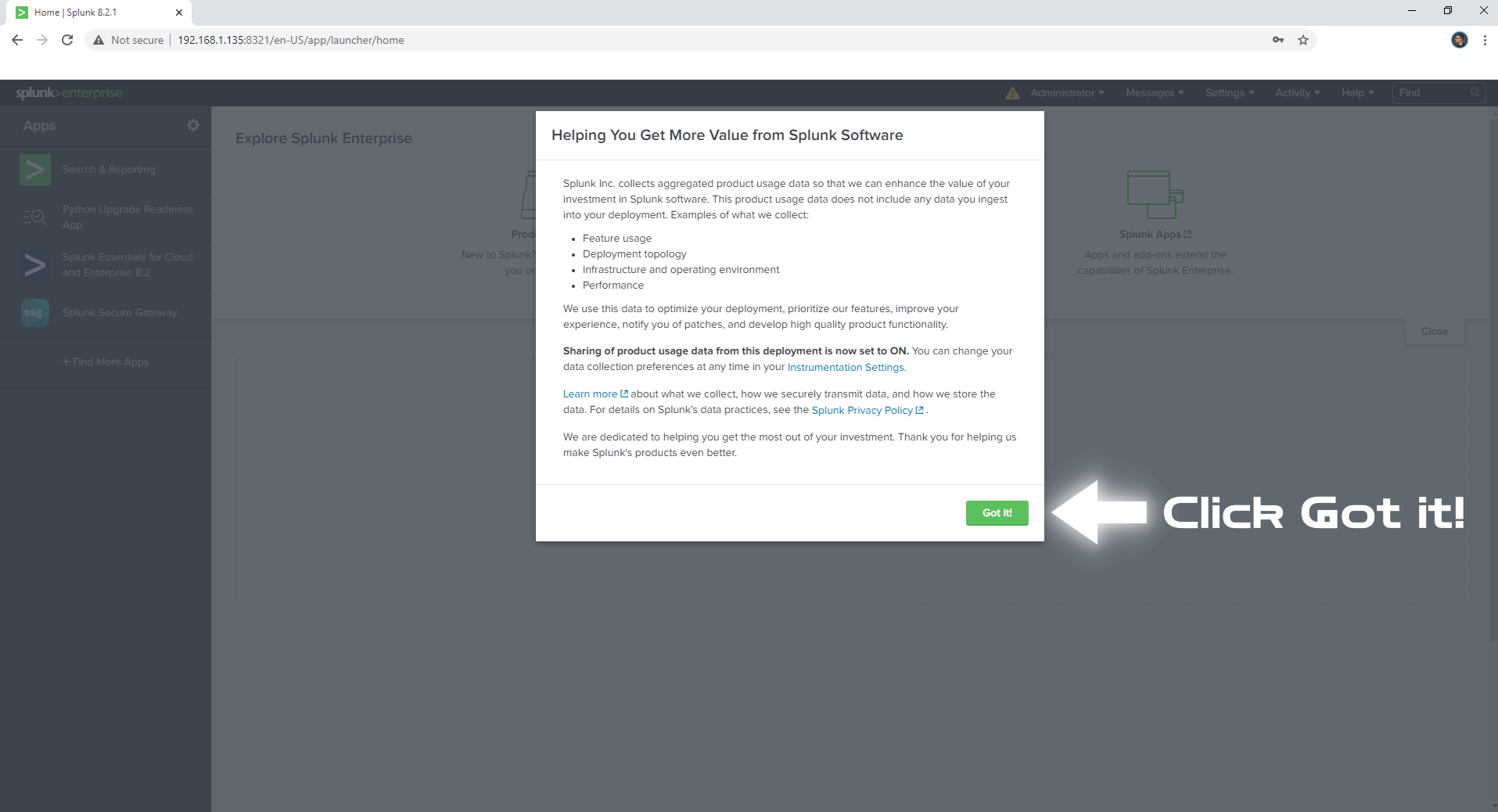
Enjoy Splunk!
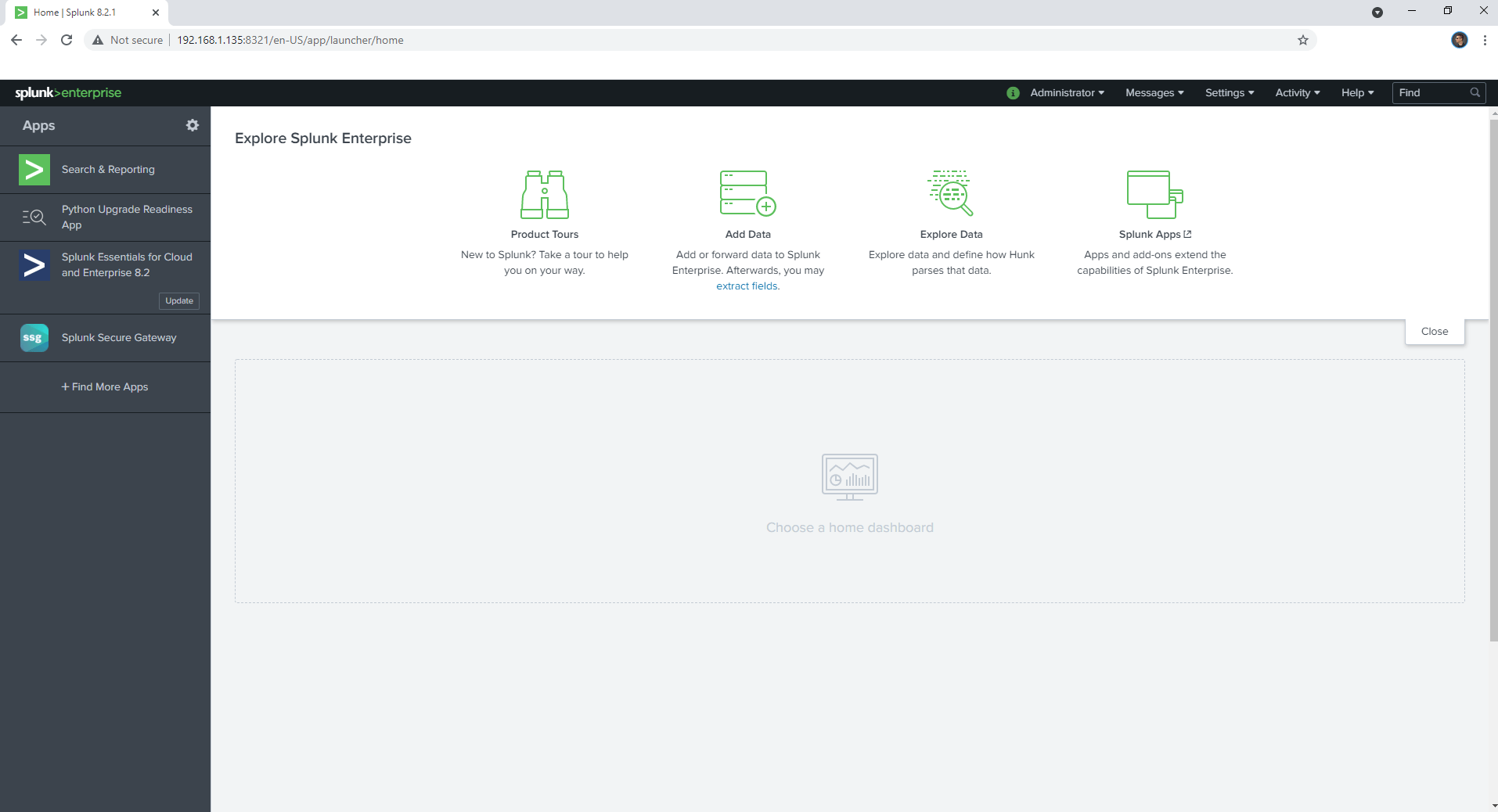
If you encounter issues by using this container, make sure to check out the Common Docker issues article.
Note: If you want to run the Splunk container over HTTPS, check out my article How to Run Docker Containers Over HTTPS.
Note: You need more than 2GB free space on your disks for Splunk as it’s a heavy application.
Note: Find out how to update the Splunk container with the latest image.
Note: How to Back Up Docker Containers on your Synology NAS.
Note: Can I run Docker on my Synology NAS? See the supported models.
Note: How to Free Disk Space on Your NAS if You Run Docker.
Note: How to Schedule Start & Stop For Docker Containers.
Note: How to Activate Email Notifications.
Note: How to Add Access Control Profile on Your NAS.
Note: How to Change Docker Containers Restart Policy.
Note: How to Use Docker Containers With VPN.
Note: Convert Docker Run Into Docker Compose.
Note: How to Clean Docker.
Note: How to Clean Docker Automatically.
Note: Best Practices When Using Docker and DDNS.
Note: Some Docker Containers Need WebSocket.
Note: Find out the Best NAS Models For Docker.
Note: Activate Gmail SMTP For Docker Containers.
This post was updated on Monday / May 5th, 2025 at 3:00 PM
